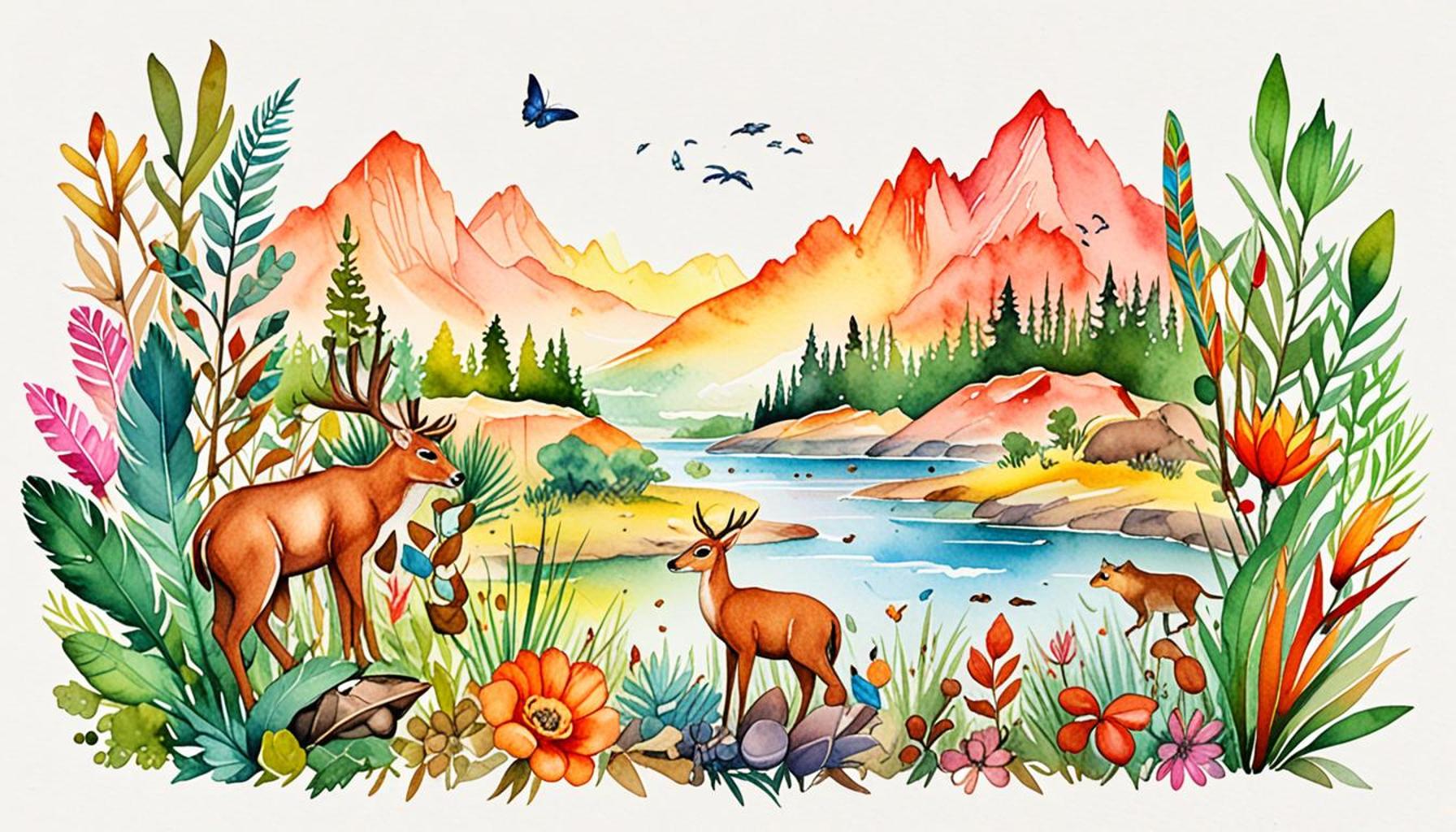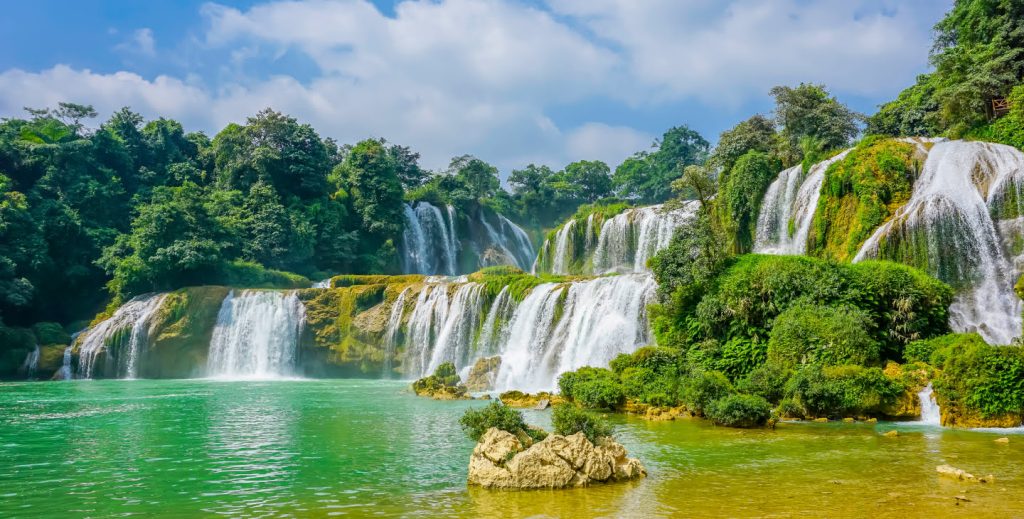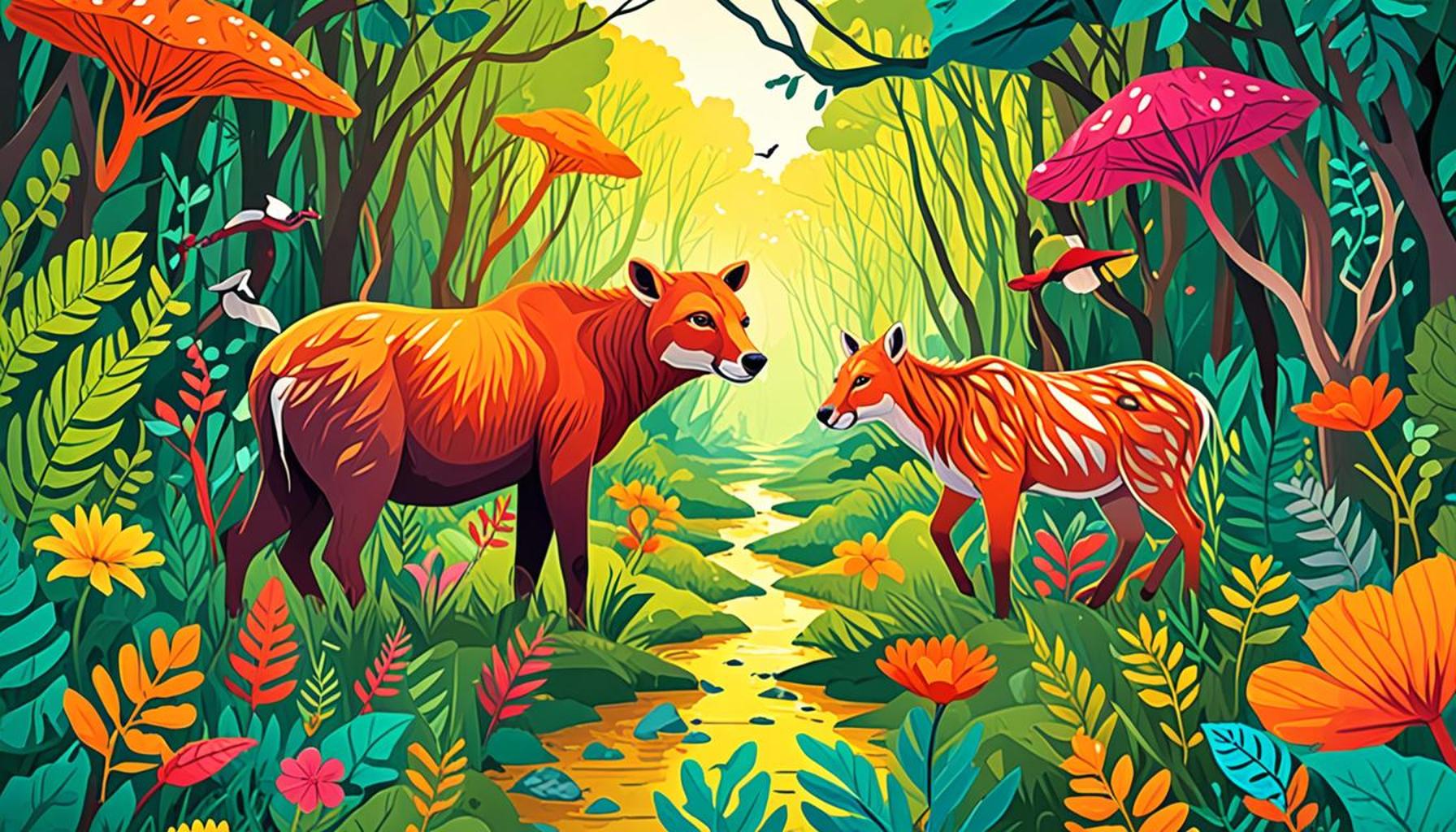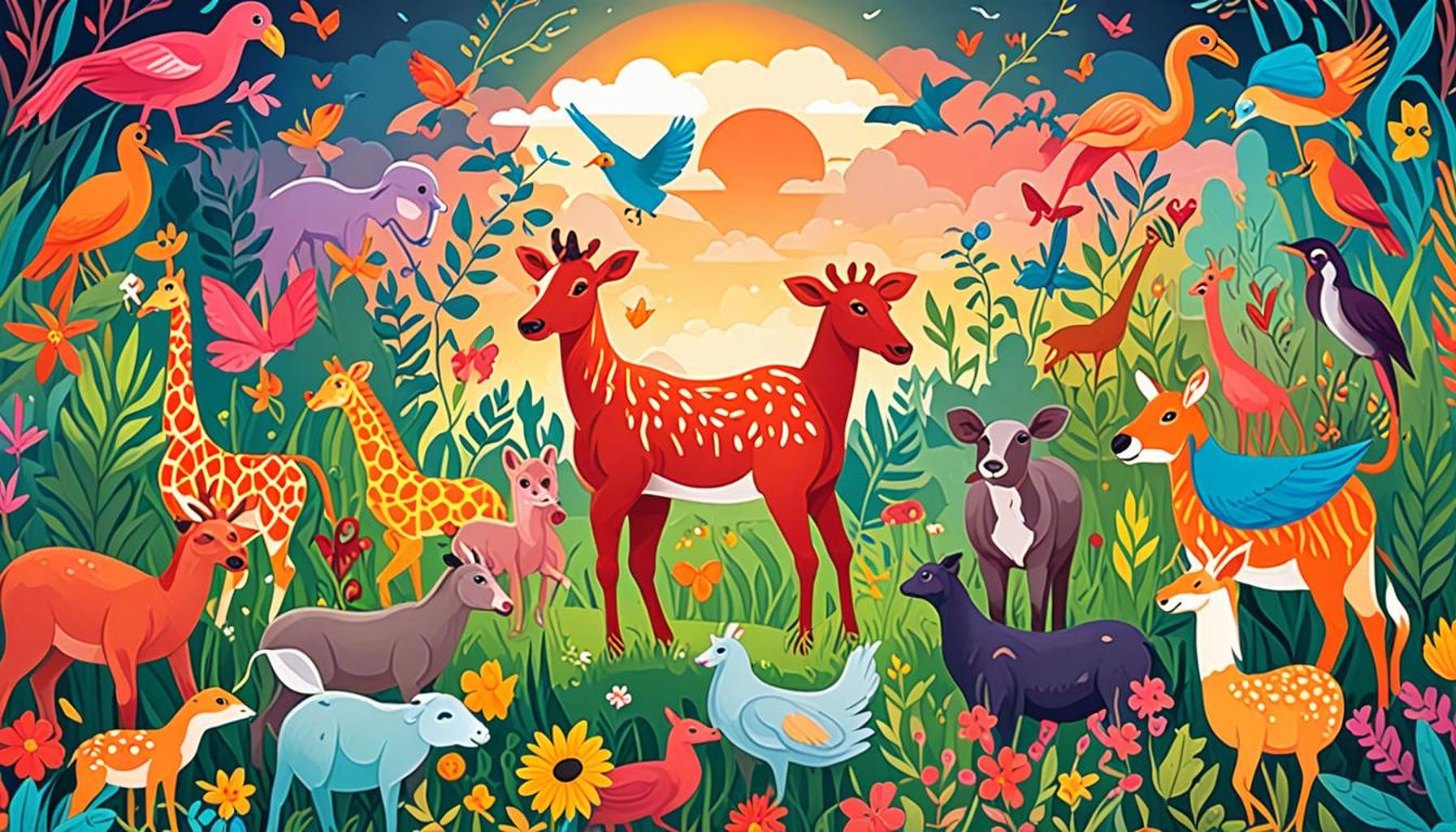Environmental Reserves Role in Native Wildlife Preservation

Understanding Environmental Reserves
Across the United States, environmental reserves are more than just stunning landscapes; they are crucial lifelines for the ecosystem. These protected areas, ranging from national parks to wildlife refuges, serve not only as havens for endangered species but also as essential mechanisms for maintaining the ecological balance vital to our planet’s health. Such reserves embody a deep commitment to preserving nature, enhancing the diversity of life forms, and preparing for future ecological challenges.
Habitat Protection is perhaps one of the most critical functions of environmental reserves. For example, places like the Florida Everglades offer a unique and irreplaceable habitat for a multitude of species, including the elusive Florida panther and the American alligator. These areas protect ecosystems from the relentless march of urban development, which often leads to habitat destruction and loss of biodiversity. By establishing environmental reserves, the United States can ensure that vital habitats remain intact, serving as ecosystems that can sustain themselves and flourish.
Biodiversity Conservation is another fundamental aspect of environmental reserves. These areas play a pivotal role in safeguarding various species, helping to preserve genetic diversity that is crucial for resilience against disease and climate change. For instance, the Yellowstone National Park is not only famous for its geothermal wonders but also for being a sanctuary for species such as the gray wolf and the bison. The recovery of the gray wolf in Yellowstone demonstrates how conservation efforts within reserves can lead to a rebound in local ecosystems, highlighting the interconnectedness of biodiversity.
Moreover, these protected areas also serve as invaluable research opportunities for scientists and conservationists alike. Environmental reserves offer natural laboratories where researchers can study wildlife behavior and develop effective conservation strategies. The work conducted in these areas often leads to groundbreaking discoveries that can inform policies and practices across the nation. The long-term ecological studies carried out in places like the Hubbard Brook Experimental Forest in New Hampshire have provided insights into forest ecology that are critical to understanding environmental change.

The advantages of environmental reserves stretch beyond ecological contributions; they also provide societal benefits. Preserving nature through these reserves also helps in mitigating climate change by sequestering carbon emissions, thus contributing to global efforts in combating climate issues. Furthermore, they protect water supplies by maintaining the natural filtration processes of wetlands and forests, safeguarding drinking water for millions of Americans.
As modernization and environmental pressures grow, the importance of environmental reserves becomes ever more pronounced. It is essential that the community recognizes the myriad benefits these areas provide, from habitats for wildlife to spaces for recreation and inspiration. Engaging with and supporting these reserves is vital for securing America’s natural heritage for future generations, and readers are encouraged to discover and explore the immense contributions of these critical lands.
CHECK OUT: Click here to explore more
The Crucial Function of Environmental Reserves in Wildlife Preservation
Environmental reserves play a pivotal role in the preservation of native wildlife, acting as sanctuaries where species can thrive away from the pressures of human-induced habitat alterations. By creating designated areas where flora and fauna can coexist without interference, environmental reserves offer more than just a refuge—they are a key element in the larger web of conservation and ecology.
One of the primary benefits of environmental reserves is the establishment of protected habitats that allow species to flourish. A striking example can be seen in the Apache-Sitgreaves National Forest in Arizona, which serves as home to diverse wildlife, including the endangered Mexican spotted owl and the black-footed ferret. By prohibiting development and industrial activities in these regions, reserves ensure that these animals have the essential space to reproduce, feed, and interact within their natural habitats.
Moreover, environmental reserves are instrumental in combating the threats posed by invasive species. Such species can outcompete native flora and fauna, leading to dramatic shifts in ecosystems. Within reserves, management strategies can be implemented to control these invasive species, thereby allowing native wildlife to regain a foothold in their natural environment. This is particularly evident in reserves like Hawai’i Volcanoes National Park, where extensive efforts are made to eradicate invasive plants to protect native bird species, such as the ‘i’iwi and the Hawaiian goose.
Key Benefits of Environmental Reserves in Wildlife Conservation
- Safe Zones for Breeding: Reserves act as safe havens for endangered species to breed and increase their populations, crucial for species recovery.
- Migratory Pathways: Many reserves are located along migratory routes, providing essential resting and feeding areas for birds and wildlife traveling long distances.
- Educational Platforms: They serve as educational resources for the public, raising awareness about the importance of wildlife preservation and the need for responsible stewardship of natural resources.
- Ecological Research: These protected areas offer researchers a unique opportunity to study ecosystems in their natural state, leading to improved management practices.
Additionally, the act of preserving large swaths of land within environmental reserves aids in the discourse regarding climate resilience. With many species facing existential threats due to climate change, these reserves can act as a buffer, preserving not just individual species, but entire ecosystems that may be crucial for adapting to changing conditions.
As we delve deeper into understanding the interconnectedness of wildlife and their habitats, it becomes clear that environmental reserves are instrumental in maintaining the health of our ecosystems. They not only protect individual species from the brink of extinction but also foster biodiversity that enhances the resilience of our planet to environmental changes. Through collaboration among governments, organizations, and communities, the potential of environmental reserves can be maximized to ensure the survival of native wildlife for generations to come.
| Advantages | Details |
|---|---|
| Habitat Protection | The establishment of environmental reserves creates crucial habitats, preventing fragmentation and loss of ecosystems vital for native wildlife. |
| Biodiversity Conservation | These areas are sanctuaries for diverse species, ensuring the preservation of genetic diversity necessary for ecological resilience and adaptability. |
| Educational Opportunities | Environmental reserves serve as living laboratories for research and education, raising awareness about the importance of wildlife conservation. |
| Ecosystem Services | They provide essential services such as carbon storage, water purification, and soil stabilization, benefiting both wildlife and human populations. |
The role of environmental reserves in preserving native wildlife cannot be overstated. They act as a bulwark against habitat degradation, offering not just refuge, but also actively contributing to ecosystem stability. By protecting critical habitats, they ensure that diverse species can thrive, which is increasingly important in a world facing environmental changes. Additionally, environmental reserves promote biodiversity conservation, maintaining genetic diversity that is pivotal for adaptation and survival in changing climates. These reserves also serve as important educational platforms, allowing researchers and students to engage with and learn about wildlife preservation efforts first-hand, which cultivates a sense of responsibility towards our natural heritage. Furthermore, they provide invaluable ecosystem services, playing an essential role in carbon capture, water filtration, and maintaining soil health, thereby also supporting human communities. As we delve deeper into the myriad benefits of environmental reserves, it becomes clear that their role extends far beyond merely housing wildlife; they are integral to ensuring the sustainability of our planet’s ecosystems.
CHECK OUT: Click here to explore more
Enhancing Biodiversity Through Environmental Reserves
Environmental reserves are not just isolated patches of land; they are vibrant ecosystems that play an essential role in fostering biodiversity. Biodiversity is critical for the resilience of ecosystems, enabling them to recover from disturbances and maintain their functionality. In the United States, reserves like Yellowstone National Park illustrate this fact, as the park is home to over 1,700 species of plants and numerous animal species, including thriving populations of grizzly bears and wolves. The unique ecological settings found within these parks give rise to complex interactions among organisms, creating a dynamic balance essential for the health of the environment.
Additionally, marine reserves serve a similar function in ocean ecosystems. The Florida Keys National Marine Sanctuary points out that designating specific areas as protected not only benefits the marine life within but also contributes to the sustainability of the fishing and tourism industries. Coral reefs, which face increasing threats from climate change, benefit greatly from these reserves. They provide safe habitats for diverse marine species, allowing populations to recover and thrive, simultaneously enhancing the biodiversity of the entire oceanic system.
Restoration Efforts and Community Involvement
Moreover, environmental reserves are often focal points for restoration efforts designed to rehabilitate degraded habitats. Initiatives such as controlled burns in places like the Everglades National Park or reforestation projects in the Great Smoky Mountains National Park aim to restore native flora and fauna. These efforts not only assist in the recovery of endangered species but also facilitate the restoration of ecological balance by reintroducing missing elements of the ecosystem.
Community involvement in these restoration projects is paramount. Local residents often participate in volunteer days to help remove invasive species or plant native trees, creating a sense of stewardship towards the environment. Programs designed to engage communities underscore the vital role residents play in conservation. This participatory approach reinforces the idea that preserving wildlife is a collective responsibility that transcends beyond park boundaries.
Policy and Legislative Frameworks Supporting Environmental Reserves
To fortify the mission of wildlife preservation through environmental reserves, robust policy and legislative frameworks are essential. Acts such as the Endangered Species Act in the United States offer legal backing for the conservation of threatened species, facilitating the designation of critical habitats within these protected areas. However, continuous advocacy is needed to ensure that funding and efforts do not dwindle, thereby jeopardizing the sustainability of these reserves.
Additionally, international cooperation on wildlife conservation issues is exemplified by the Convention on Biological Diversity, which encourages countries to create protected areas and establish conservation strategies. By promoting such frameworks, nations can share best practices, scientific research, and funding necessary for effective wildlife preservation, ensuring that environmental reserves can adequately fulfill their critical role.
In essence, environmental reserves provide a foundation for promoting biodiversity, supporting restoration efforts, fostering community involvement, and establishing a solid policy framework. Their multifaceted contributions to the preservation of native wildlife highlight their indispensable role in securing the future of countless species, reestablishing the intricate balance of ecosystems, and playing a crucial part in the ongoing fight against biodiversity loss. As these reserves evolve, they can continue to offer hope for wildlife populations striving to survive in an increasingly challenging world.
SEE ALSO: Click here to read another article
Conclusion: The Vital Importance of Environmental Reserves
In conclusion, the role of environmental reserves in native wildlife preservation cannot be overstated. These invaluable sanctuaries provide an essential framework for maintaining biodiversity, facilitating habitat restoration, and nurturing community engagement. They act as vital lifelines for myriad species, ensuring that ecosystems retain their resilience in the face of growing environmental threats.
The collaborative efforts seen in initiatives ranging from controlled burns in national parks to community volunteer days illustrate the interconnectedness of human activity and ecological health. Local communities play an irreplaceable role in the stewardship of these reserves, fostering a collective responsibility that not only benefits wildlife but also enriches human lives through education and experiential interactions with nature.
Policy and legislative frameworks, such as the Endangered Species Act and international treaties like the Convention on Biological Diversity, underpin these conservation efforts, yet continuous advocacy is vital to adapt to emerging challenges, including climate change and habitat loss. As we move forward, it is crucial for stakeholders—governments, NGOs, and private citizens—to unite in their commitment to strengthen these reserves and their governance.
As guardians of our natural heritage, environmental reserves hold the potential to foster resilience not only for wildlife but for future generations as well. By investing in their preservation and enhancement, we are not just protecting species; we are safeguarding the intricate web of life that sustains us all. The future of countless species hinges on our actions today—let us ensure that we pave the way for a biodiverse and thriving planet.



